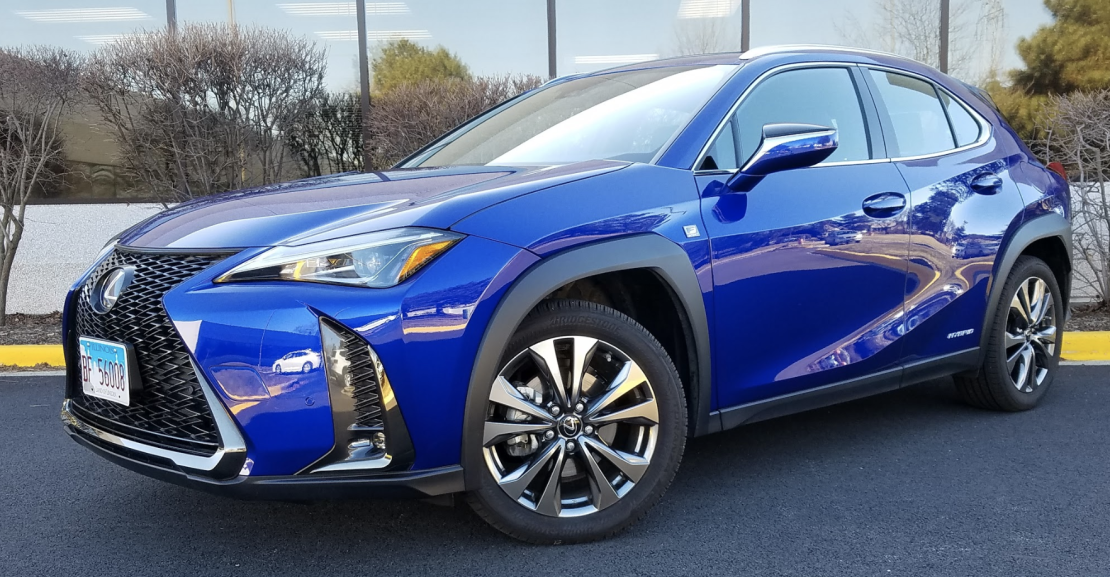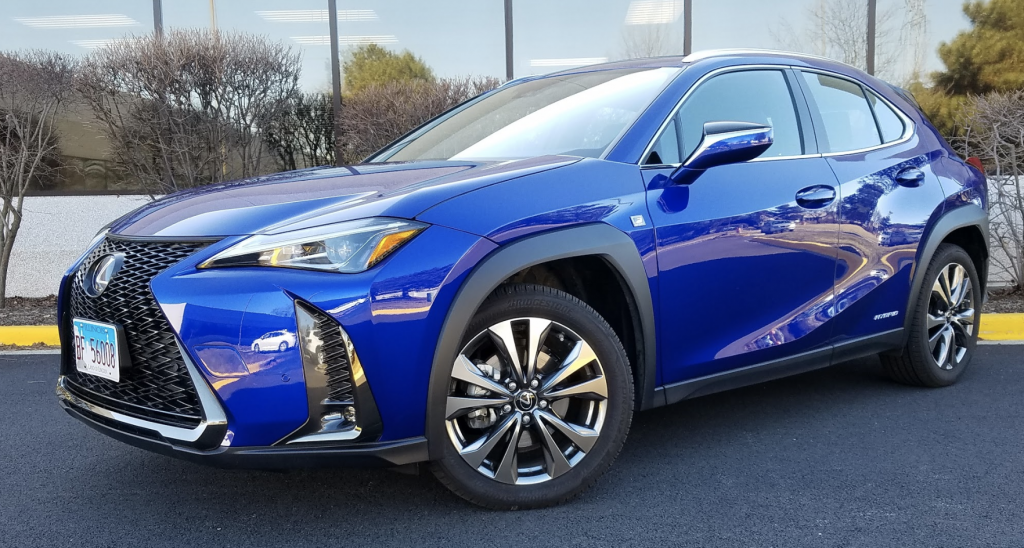
2019 Lexus UX 250h F Sport
Class: Premium Subcompact Crossover
Miles Driven: 618
Fuel Used: 16.2
Real-world fuel economy: 38.1
Driving mix: 30% city, 70% highway
| CG Report Card | |
|---|---|
| Room and Comfort | B |
| Power and Performance | C |
| Fit and Finish | B+ |
| Fuel Economy | A |
| Value | A- |
| Report-card grades are derived from a consensus of test-driver evaluations. All grades are versus other vehicles in the same class. Value grade is for specific trim level evaluated, and may not reflect Consumer Guide's impressions of the entire model lineup. | |
| Big & Tall Comfort | |
| Big Guy | B |
| Tall Guy | B |
| Big & Tall comfort ratings are for front seats only. "Big" rating based on male tester weighing approximately 350 pounds, "Tall" rating based on 6'6"-tall male tester. | |
| Drivetrain | |
| Engine Specs | 181-hp 2.0L |
| Engine Type | 4-Cyl hybrid |
| Transmission | CVT automatic |
| Drive Wheels | All-wheel drive |
EPA-estimated fuel economy: 41/38/39 (city/highway/combined)
Fuel type: Regular gasoline
Base price: $36,000 (not including $1025 destination charge)
Options on test car: Blind-spot monitor ($500), Wireless cell-phone charger ($75), windshield de-icer ($100), auto-dimming mirror with compass and Homelink ($325), park assist/rear cross traffic alert with braking ($565), hands-free power liftgate ($600), premium paint ($595), F Sport Premium Package ($975), heated F Sport steering wheel with shift paddles ($150)
Price as tested: $40,910
Quick Hits
The great: Fuel economy, relatively low cost for features offered
The good: Powertrain performance
The not so good: Control layout, cargo space, passenger room
More UX price and availability information
CG Says:
As we’ve covered the UX’s finer points not only in our prior test of the gas-engined UX 200, but also in our First Spin of the new-for-2019 model, we’ll concentrate here on differences between the gas model and the UX 250h hybrid provided for this test.
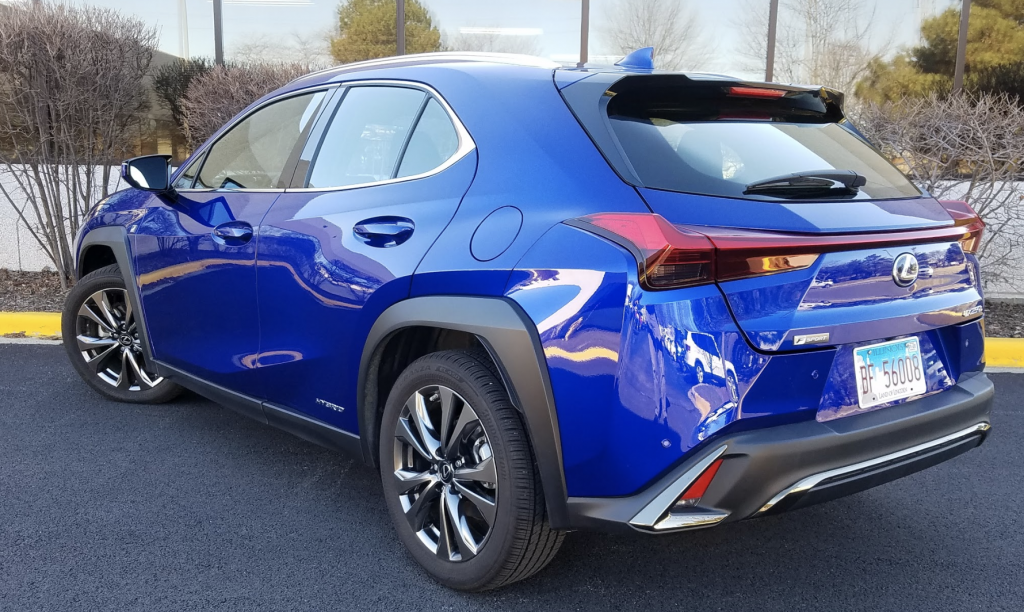
Test Drive: 2019 Lexus UX 200 F Sport
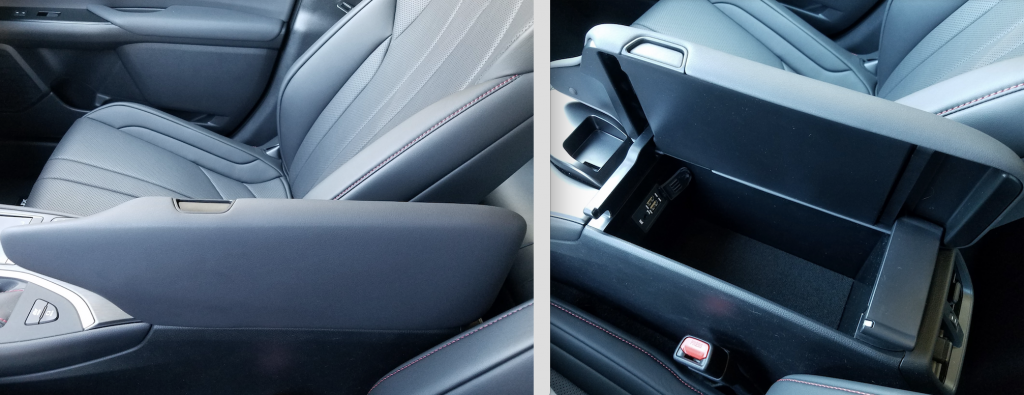
Not surprisingly, the most notable is fuel economy. As with most hybrids — and opposite of most gas models — city driving nets better mileage than highway driving. We did both — quite a bit more of the less-frugal “highway” variety — and averaged an impressive 38.1 mpg … virtually dead-on the highway EPA estimate, and just below the 39-mpg combined figure. By contrast, the front-drive UX 200 tested returned 32.0 mpg in mostly highway driving, where it’s more thrifty. One note in this regard: Thank goodness fuel economy on both is good, because their fuel tanks are rather small: the UX 250h has but a 10.6-gallon tank, the UX 200 a 12.4-gallon one. Using their respective highway EPA figures, highway range works out to 402 miles for the UX 250h, 458 for the UX 200, so … quite reasonable overall; city range works out to 434 and 360, respectively. (And remember; this is to “dry.”)

Although Lexus says the hybrid is a hair quicker from 0-60 than the gas model, our tests showed the opposite — though the figures were so close as to be within “margin of error.” We clocked the UX 250h at an average of 8.4 seconds to 60, the UX 200 at just under 8.2. Both provided decent full-throttle movement off the line and quick — if not actually strong — kickdown response from speed, though the hybrid seemed a bit better in this regard. Neither model handled big bumps well, but smaller ones were absorbed better.
The last difference is in the cargo area.
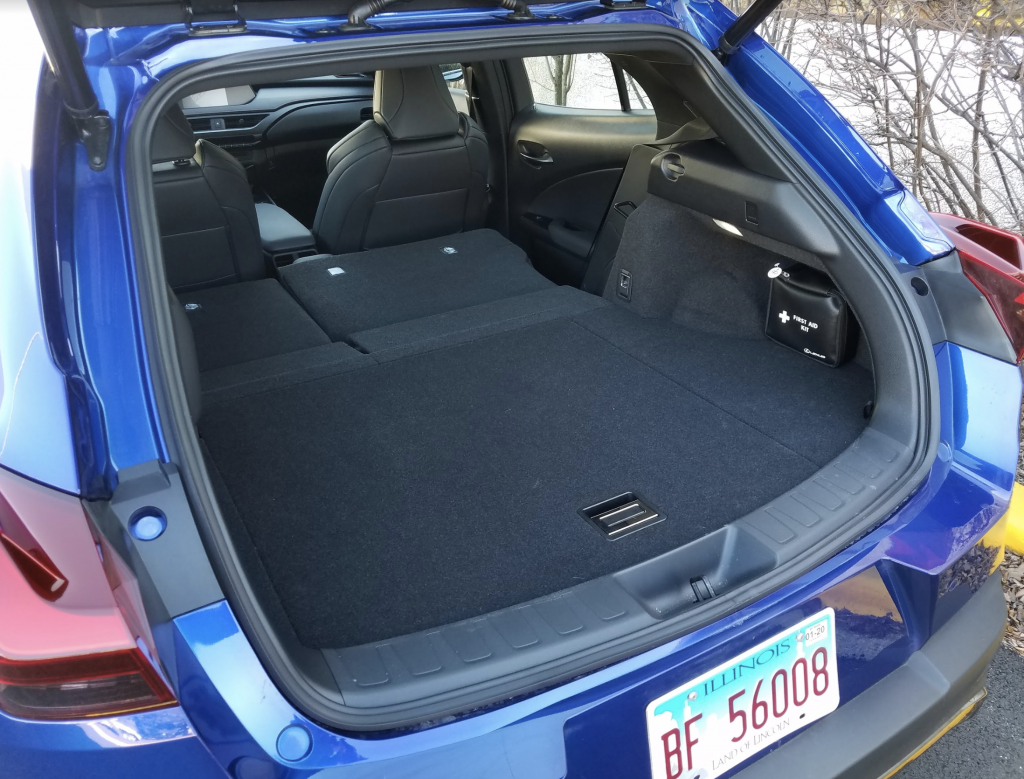
In the UX 250h, the cargo floor is a few inches higher than it is in the UX 200, likely to clear the hybrid battery. According to Lexus, that reduces cargo volume behind the rear seat to 17.1 cu. ft. vs. 21.7 for the UX 200. While it also leaves the cargo floor level with the folded rear seat backs and nearly so with the cargo opening (which is not the case with the UX 200), it restricts cargo height to just 22 inches (vs. 26.5 for the UX 200). That difference can be significant. A medium-size dog cage, for instance, is usually about 24 inches high, so it would fit in the UX 200, but not in the 250h. Both models have a good amount of underfloor storage in segmented compartments.
Quick Spin: 2017 Infiniti QX30
After testing the front-drive Lexus UX 200 and this all-wheel drive UX 250h hybrid back-to-back, the latter’s $2000 surcharge strikes us as money well spent. Not only do you get AWD (which admittedly may be more important here in the snow belt than in the Southern states), but you also get a rather significant boost in fuel economy, with the only real trade-off being a little bit less cargo space. But both fulfill their stated mission — that of a luxury urban vehicle — commendably well.
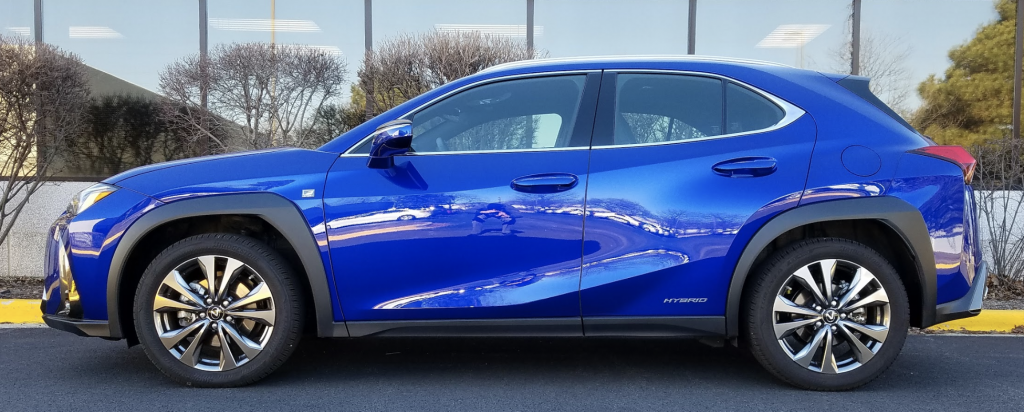
Check out our Premium Subcompact Crossover Best Buys
2019 Lexus UX 250h

